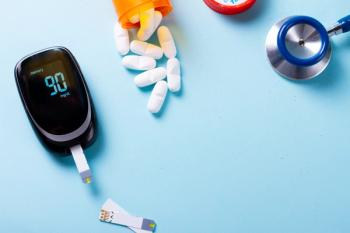
Study: T1 Diabetes Incidence Higher During the Pandemic
An investigation looks into how the incidence of type 1 diabetes changed during the first year of the COVID-19 pandemic.
Recently, the incidence of type 1 diabetes has seen an increase around the world. During the early course of the COVID-19 pandemic, investigators at Rady Children’s Hospital in San Diego, California, noted that the incidence of new-onset type 1 diabetes had significantly increased in comparison to the increases noted in previous 5 years. A
The investigators ran a 6-year retrospective review of medical records at Rady Children’s Hospital. Criteria for inclusion were admission to Rady Children’s Hospital San Diego, patient age younger than 19 years, and at least 1 positive type 1 diabetes antibody titer. The medical records were used to find age, sex, hemoglobin A1c, body .mass index z score, COVID-19 infection results, diabetic ketoacidosis as evidenced by use of insulin infusion, and pediatric intensive care unit admission. For the purpose of the of the study, the COVID-19 year was defined as March 19, 2020 to March 18, 2021.
During the COVID-19 year, 187 children were admitted for new-onset type 1 diabetes. In comparison, 119 children were admitted in March 18, 2019 to March 18, 2020. From July 2020 to February 2021, the number of type 1 diabetes diagnoses was more than the anticipated number based on the quarterly moving average of the preceding 5 years (July 2020: 15 diagnoses; 10 forecasted diagnoses; 95% CI, 6.79-13.89; February 2021: 21 diagnoses; 10 forecasted diagnoses; 95% CI, 6.88-13.54). Among the 187 patients in the COVID-19 year, 4 had a COVID-19 infection when they presented. An increase in the percentage of patients with diabetic ketoacidosis when presenting was noted, but no difference between the COVID-19 year and the 5 preceding year was noted for average age at the time of presentation (9.6 [4.2] years vs 9.7 [4.2] years), body mass index z score (−0.39 [1.78] vs −0.43 [1.61]), hemoglobin A1c (11.6% [1.8%] vs 11.7% [1.9%]), or percentage of children requiring PICU admission (16 of 187 [8.6%] vs 41 of 641 [6.4%]). A significant increase in the frequency of diabetic ketoacidosis at the time of diagnosis was found with 49.7% requiring an insulin infusion during the pandemic and 40.7% needing one in the preceding years.
The investigators concluded that case rate of type 1 diabetes was higher during the year of the pandemic than in the proceeding 5 years. Additionally, a significant increase in diabetic ketoacidosis at the time of diagnosis was also noted.
This article originally appeared on Contemporary Pediatrics .
Reference
- Gottesman B, Yu J, Tanaka C, Longhurst C, Kim J. Incidence of new-onset type 1 diabetes among US children during the COVID-19 global pandemic. JAMA Pediatr. January 24, 2022. Epub ahead of print. doi:10.1001/jamapediatrics.2021.5801
Newsletter
Pharmacy practice is always changing. Stay ahead of the curve with the Drug Topics newsletter and get the latest drug information, industry trends, and patient care tips.




































































































































